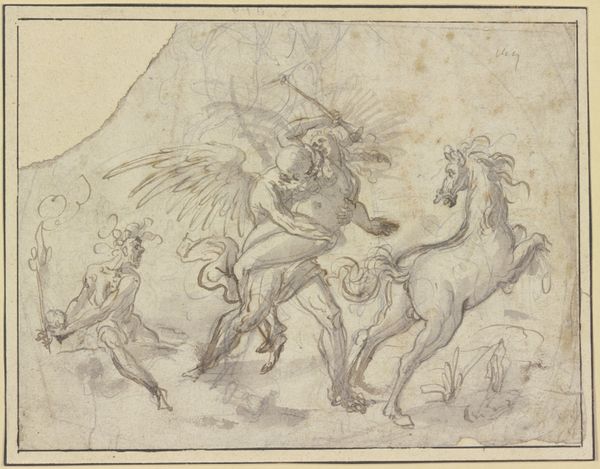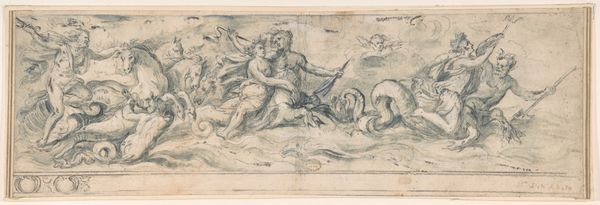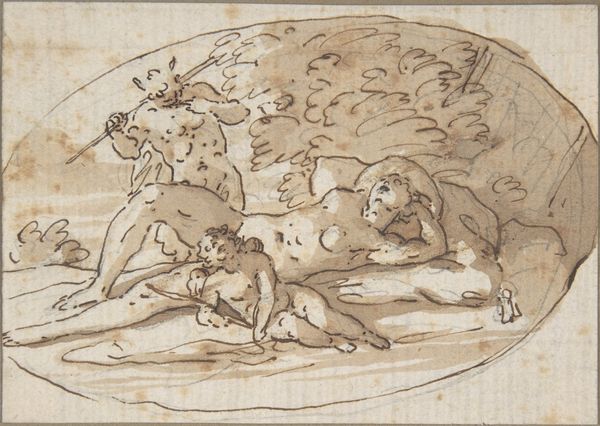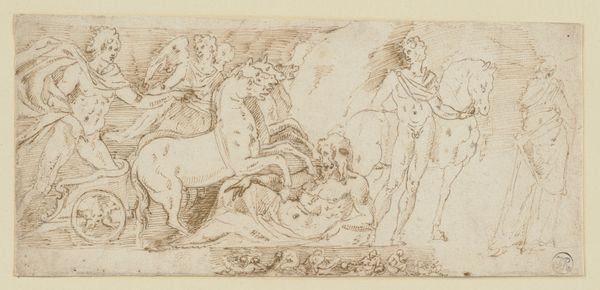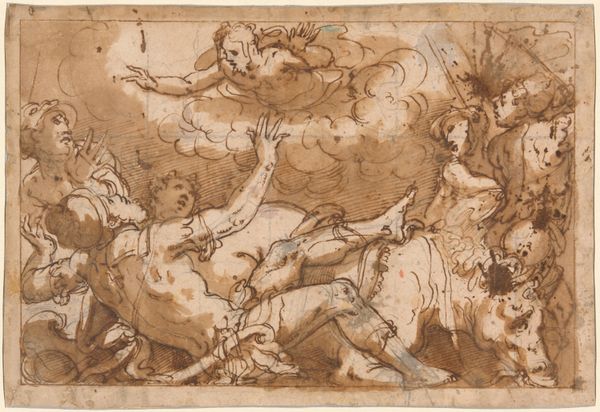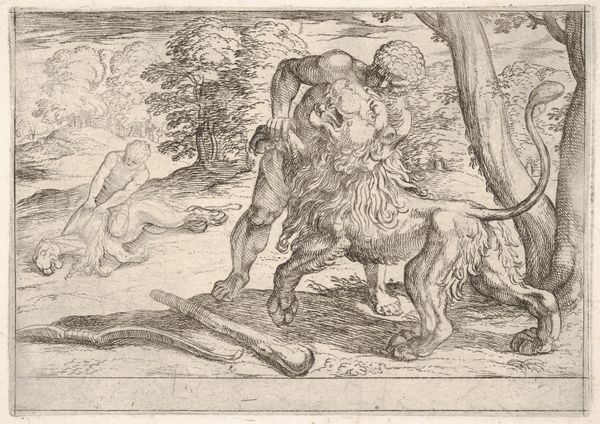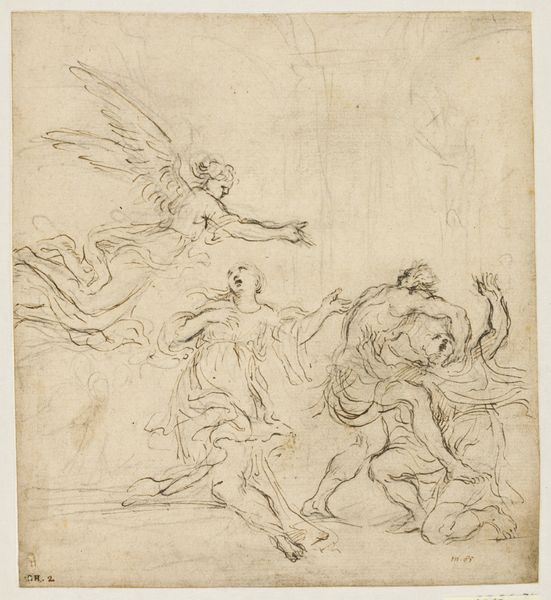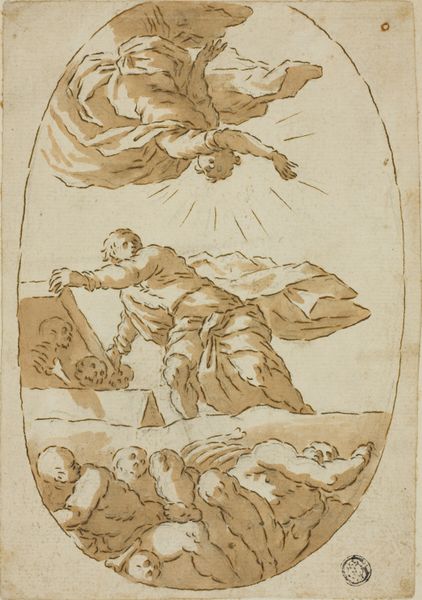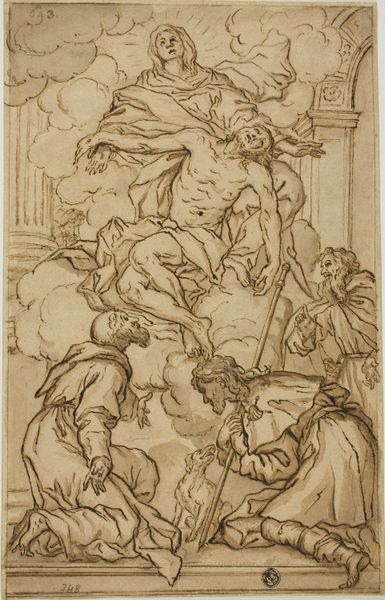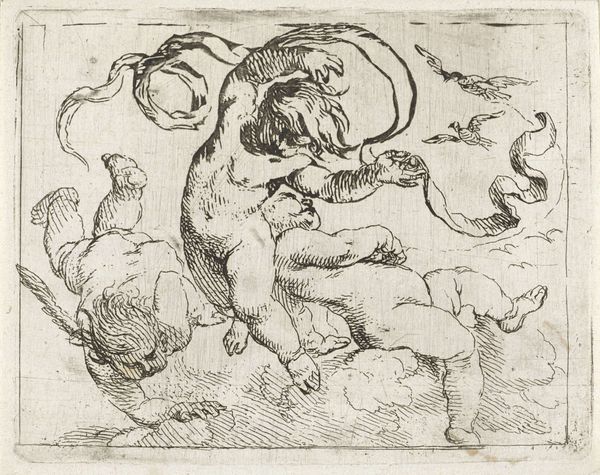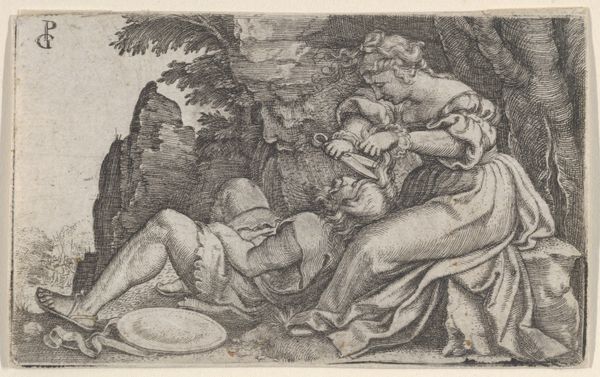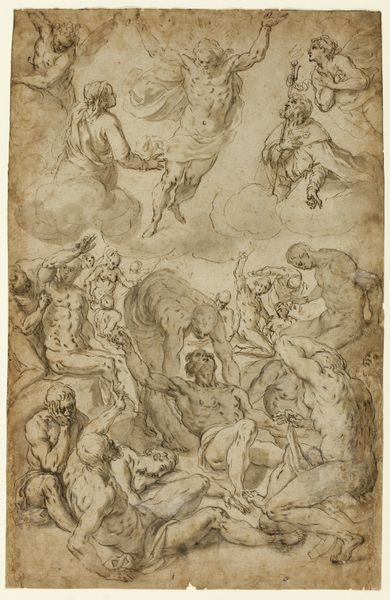
drawing
#
drawing
#
allegory
#
mannerism
#
figuration
#
11_renaissance
#
history-painting
Dimensions: Overall (approximate): 15 x 28.2 cm (5 7/8 x 11 1/8 in.) support: 20.7 x 33.6 cm (8 1/8 x 13 1/4 in.)
Copyright: National Gallery of Art: CC0 1.0
Curator: This drawing depicts a scene of transformation and divine justice: Ceres Changing Ascalaphus into a Bird of Evil Omen. The artist is Paolo Farinati, working in a distinctly Mannerist style. It is an ink and wash drawing over pencil on paper, presenting a relatively muted palette. Editor: It's immediately striking—a theatrical tableau rendered in faded sepia tones. It feels both grand and slightly unsettling, like a half-remembered dream. The figure on the left is just pulling a winged figure up from the ground like some weird sort of birth! Curator: Exactly, and consider the myth behind it! Ascalaphus revealed that Persephone had eaten pomegranate seeds in the underworld, binding her there for part of each year. Enraged by his tattling, Ceres transforms him into a screech owl, a creature associated with darkness and ill omens. See how Farinati captures this transformation: Ascalaphus already possesses wings. Editor: So, tattling transforms you into a screech owl… I wonder what modern version of that tale would look like in our always-online culture? It’s fascinating to see a god of agriculture associated with what, let’s face it, comes off like a cruel act. Where's the benevolent harvest here? Curator: Remember, divine figures often embody the full spectrum of human emotion. Ceres represents not only bounty but also the fierce protectiveness of motherhood. This myth highlights themes of justice, revenge, and the consequences of one's actions. The choice to render it as a monochromatic drawing underscores a classical sensibility, and it allows us to hone in on the themes being shown here. Editor: The figure on the right—that languid mermaid or water nymph – is she simply a bystander to this avian judgment? She adds another layer of the surreal to the whole piece. It really lets the myth linger, especially as an interpretation of powerful, emotional, female anger! Curator: Precisely. Farinati invites us to reflect on the enduring power of myth, its resonance across time, and the potent symbolism embedded within these classical stories. Editor: Agreed! It’s left me wanting to immediately fact-check what it feels I know about Ceres, which seems like the most any piece of art can do!
Comments
No comments
Be the first to comment and join the conversation on the ultimate creative platform.
